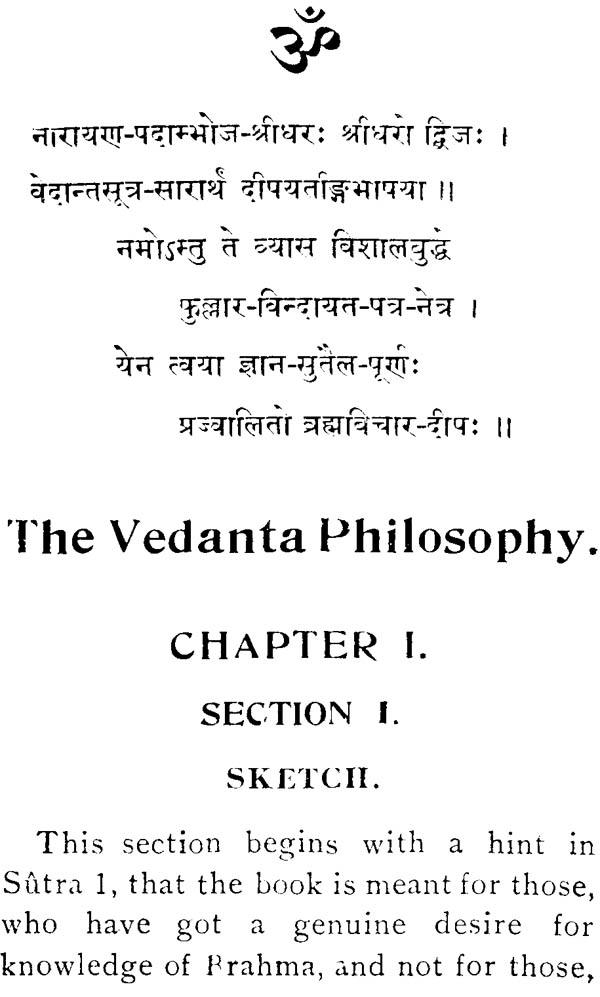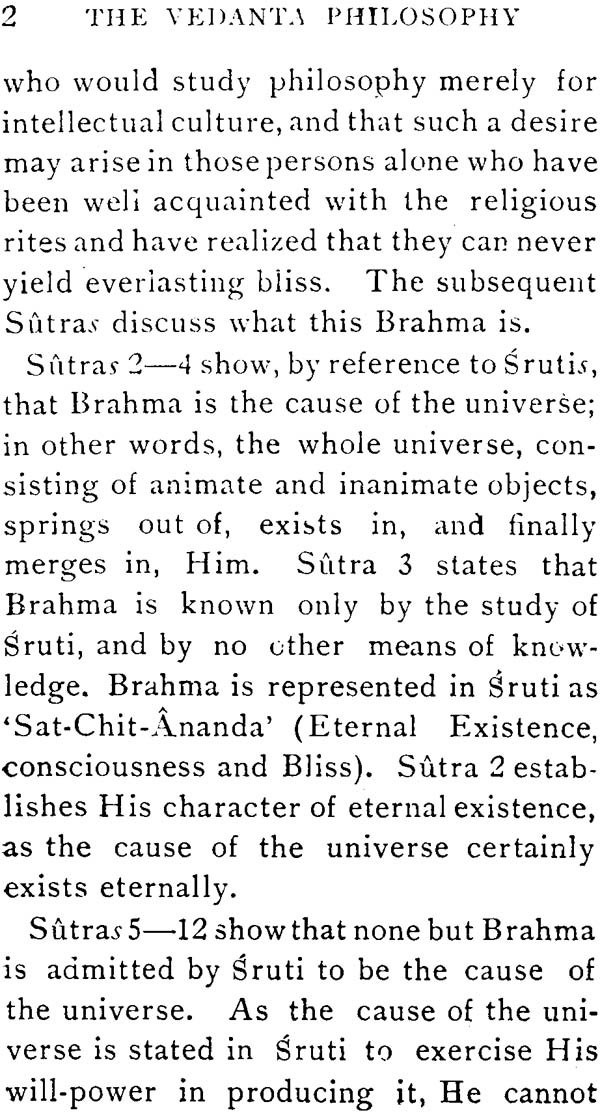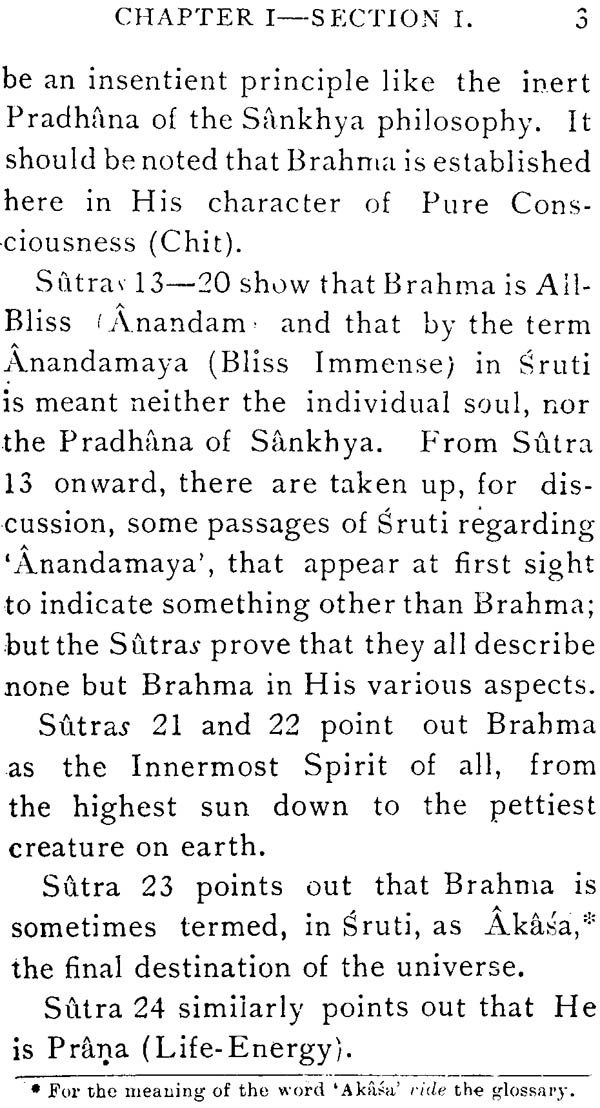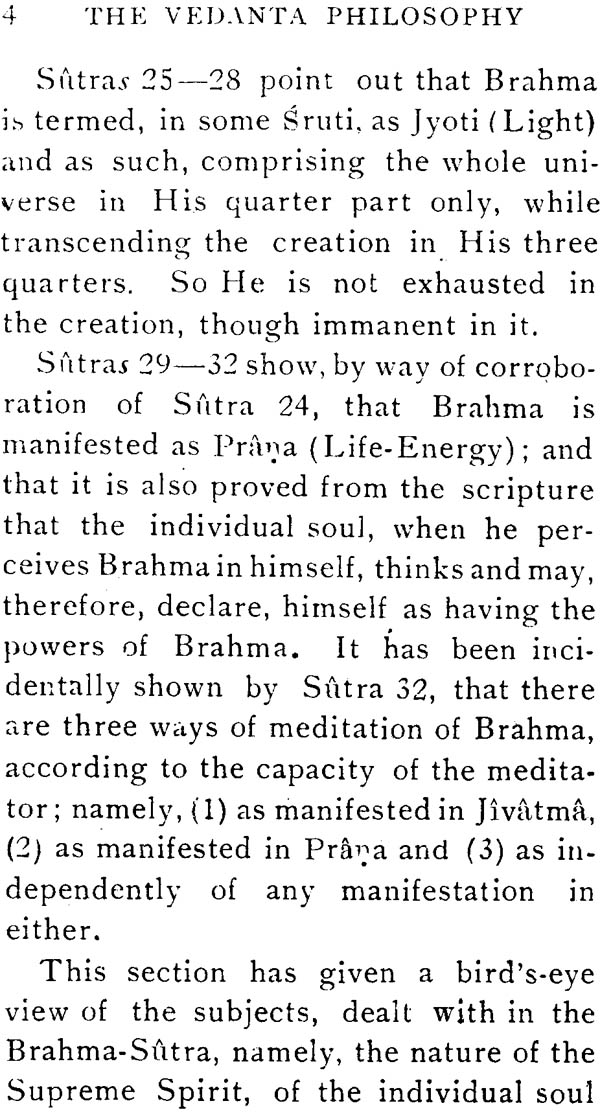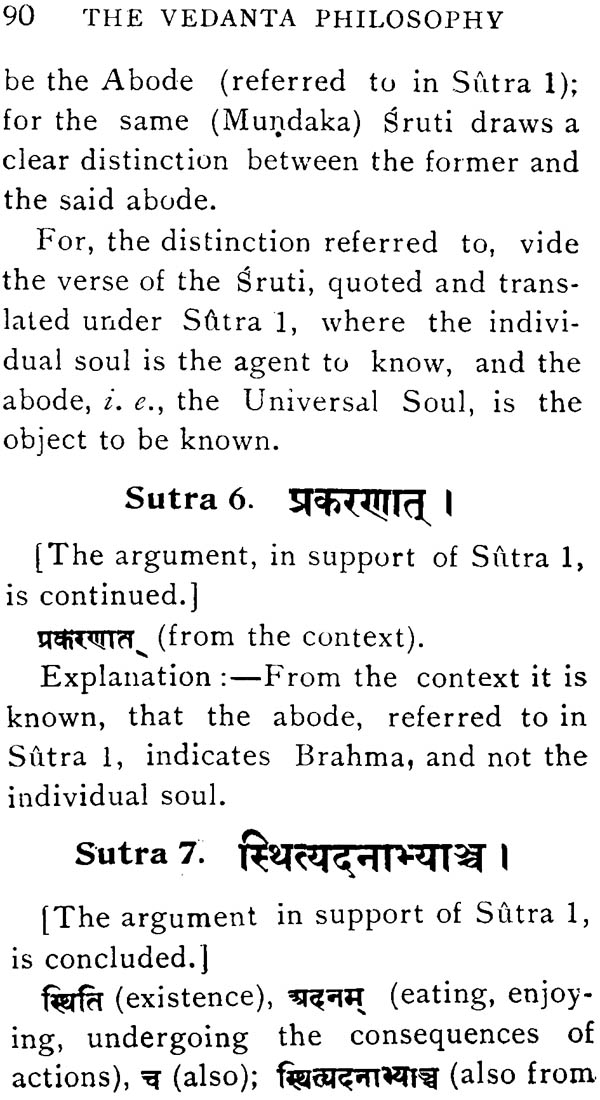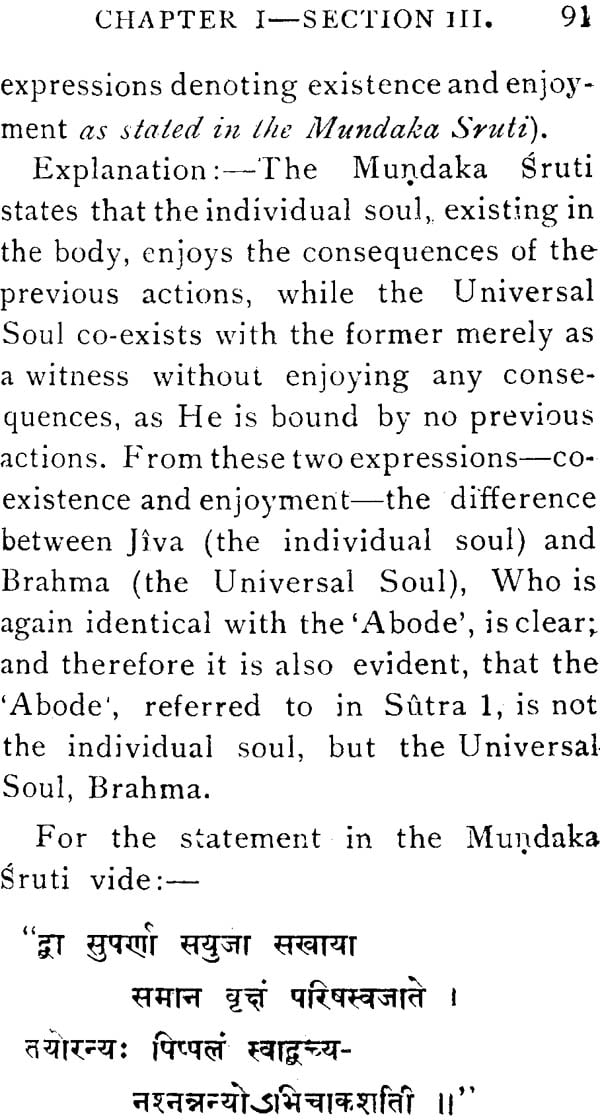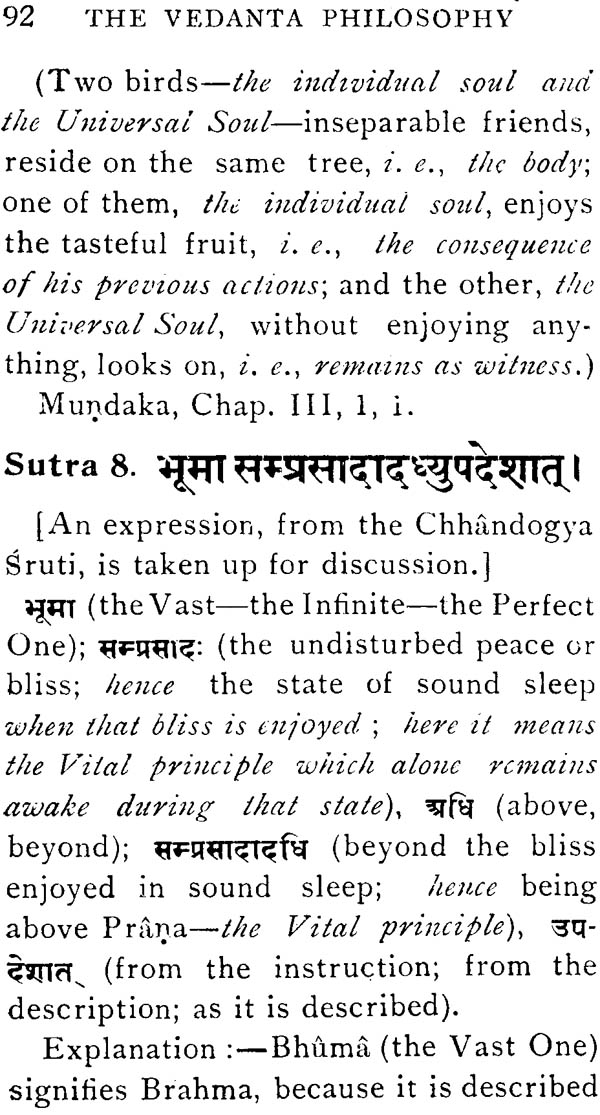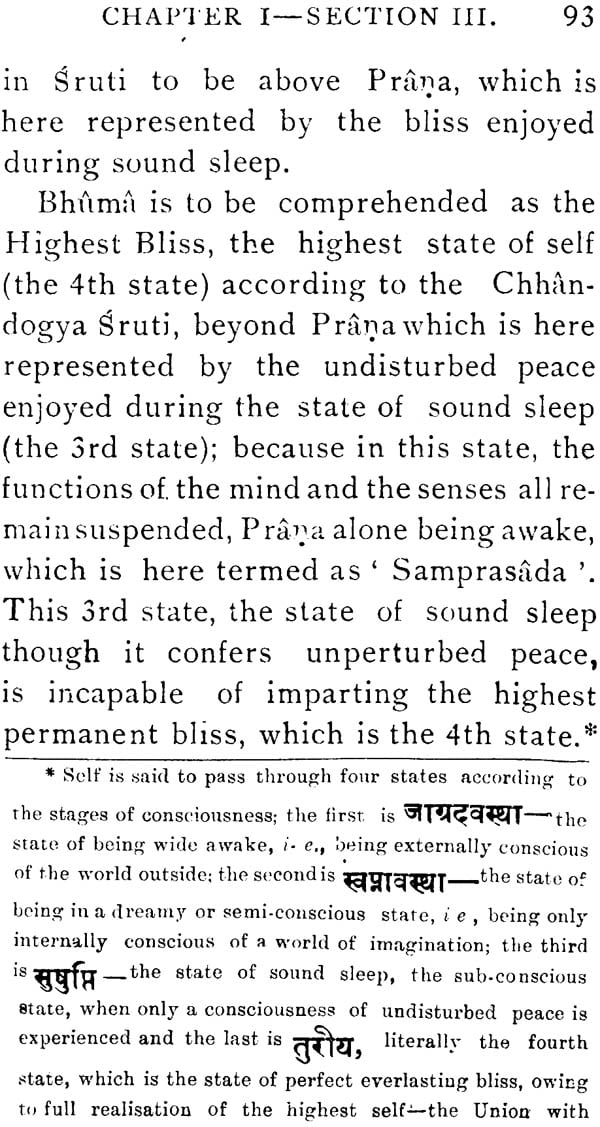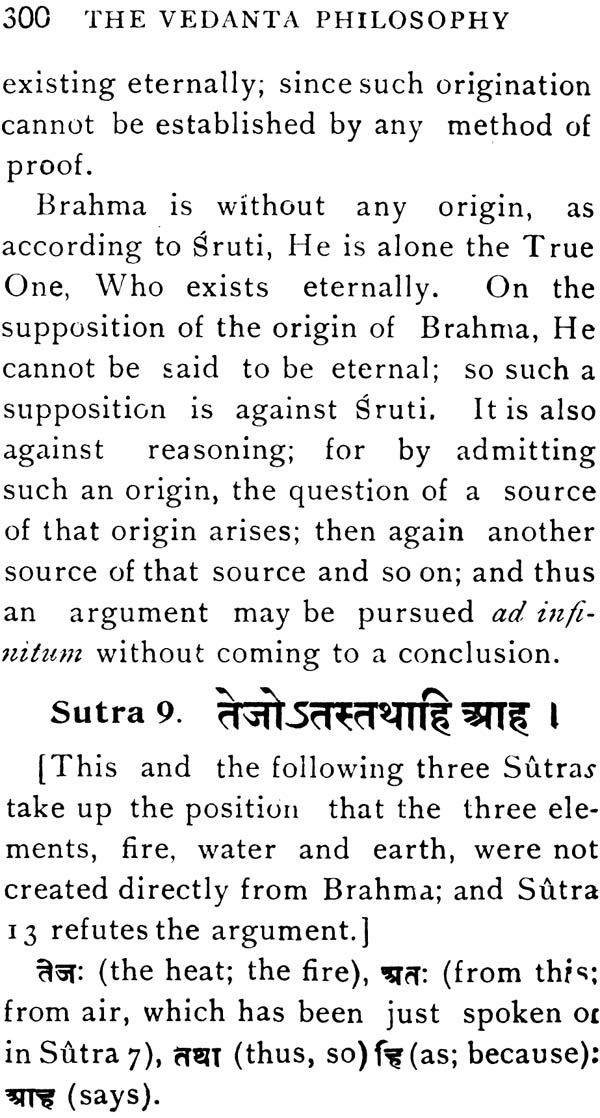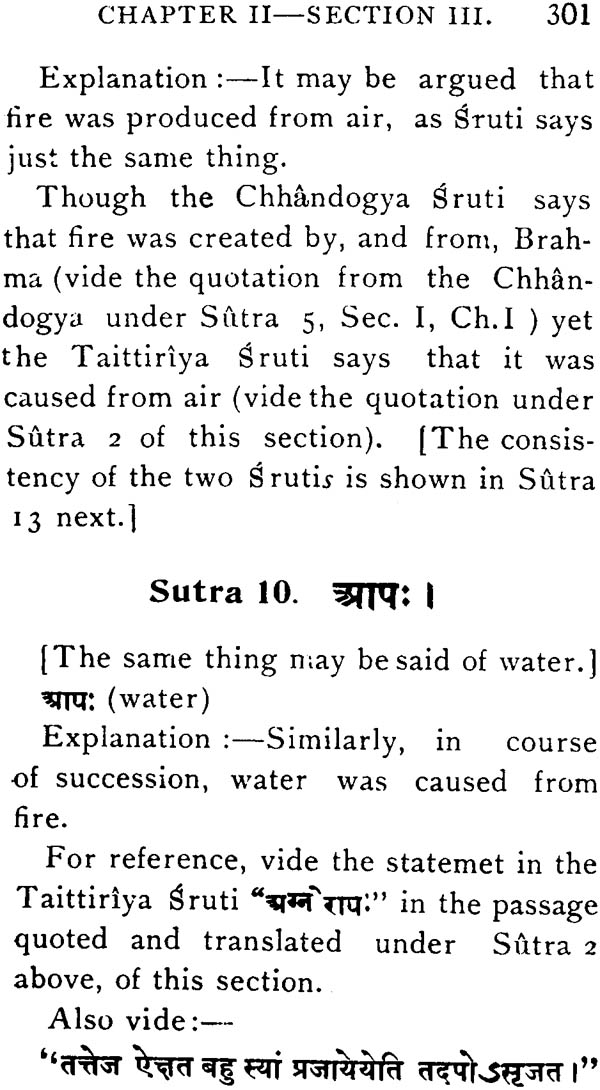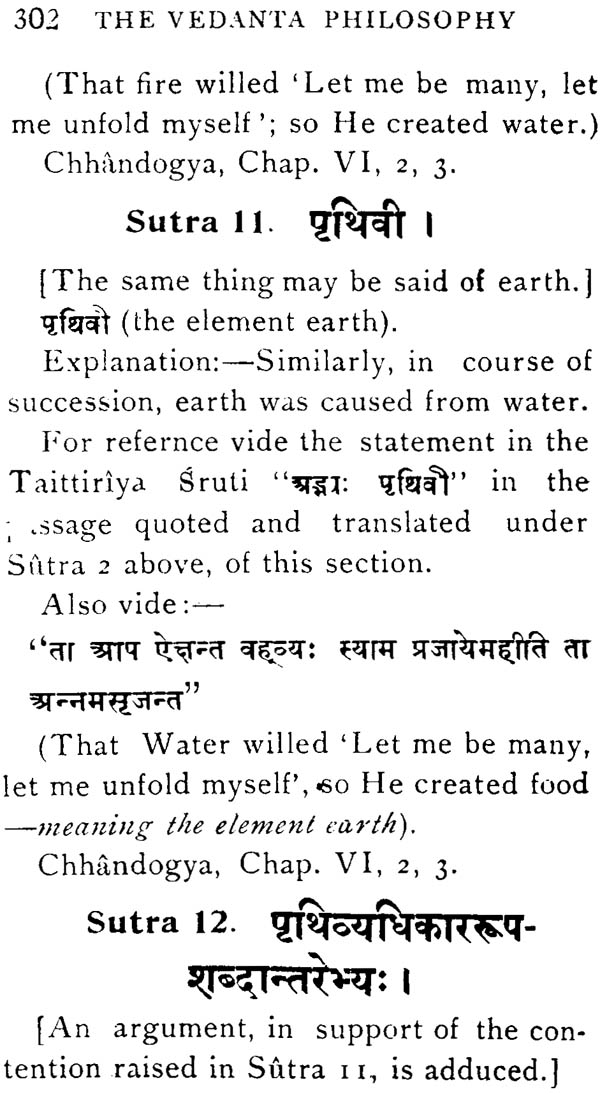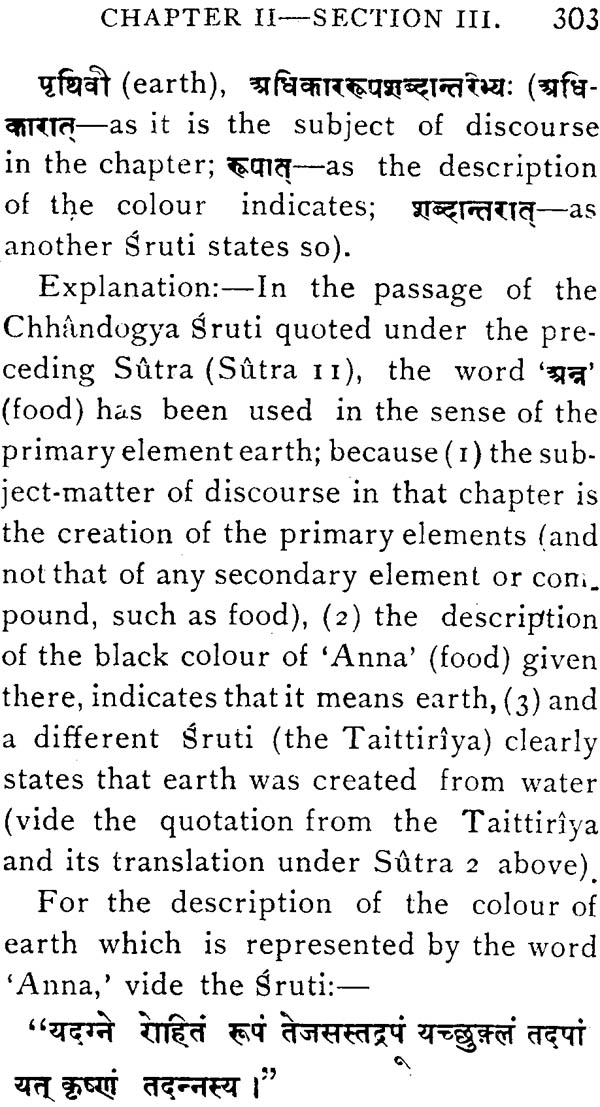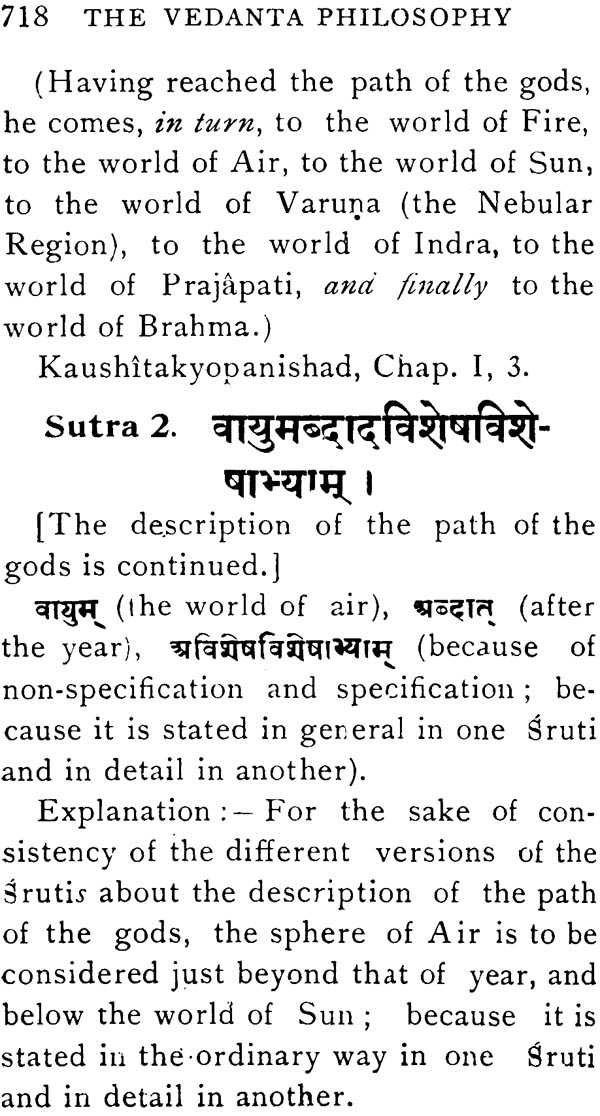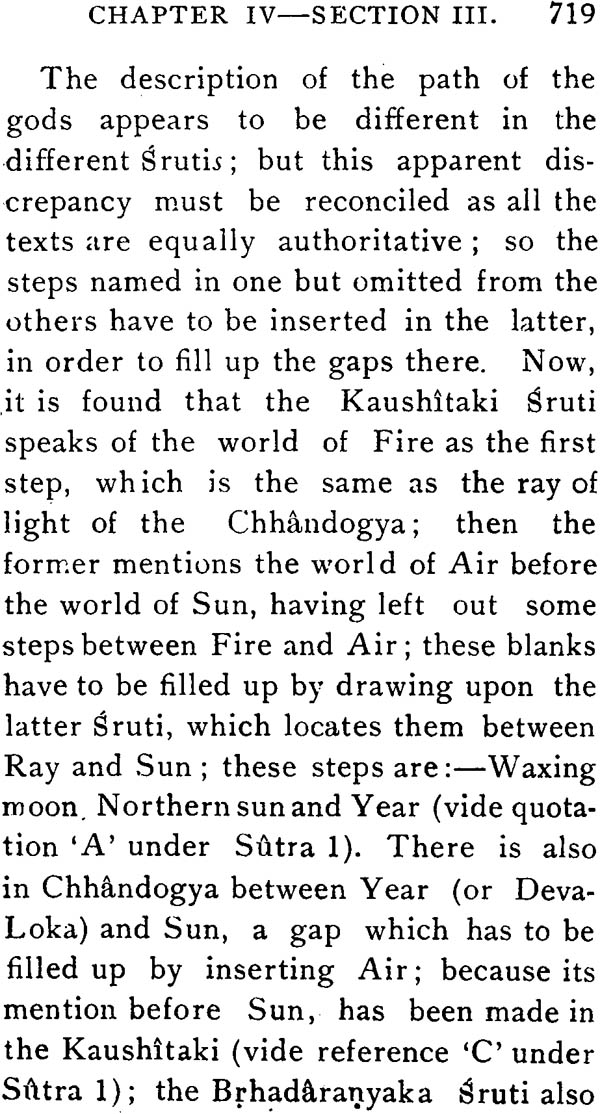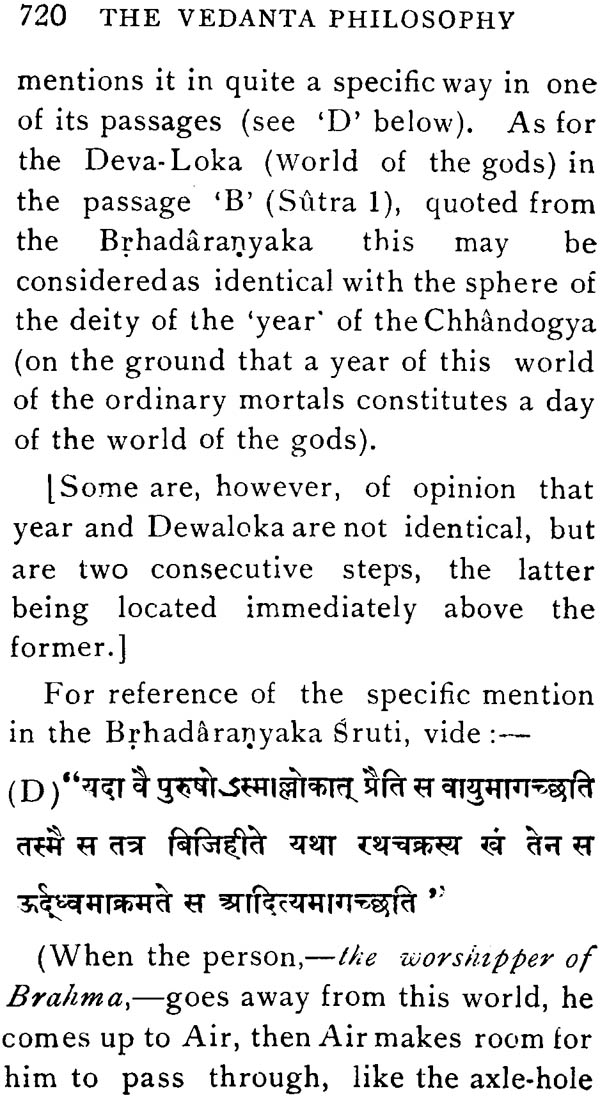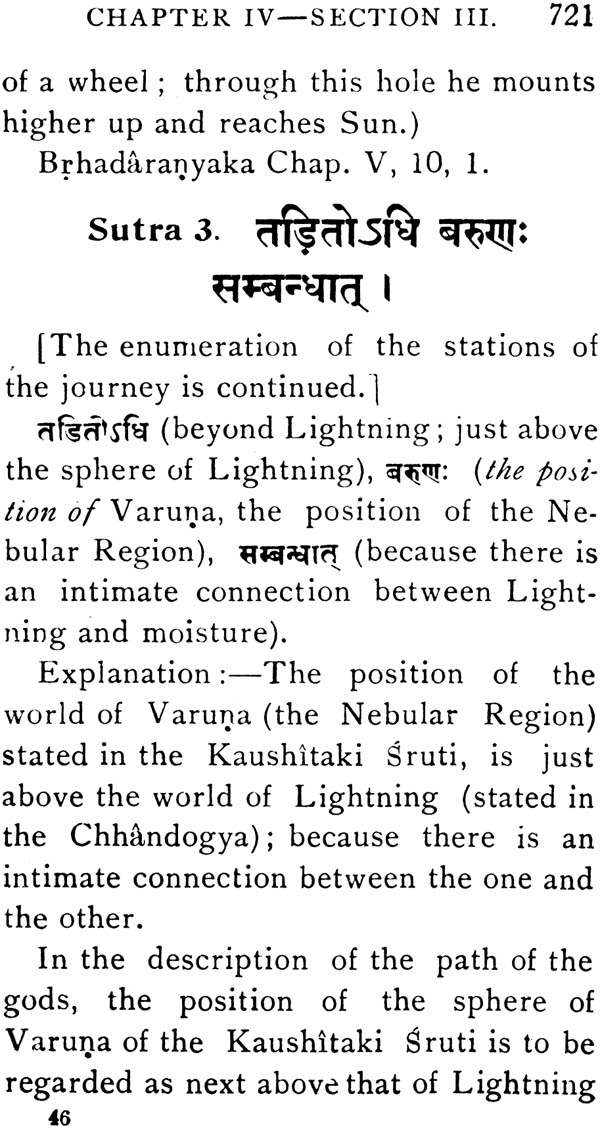
The Vedanta Philosophy: Brahma Sutras on the Basis of Nimbarakacarya's Commentary
Book Specification
| Item Code: | IDL161 |
| Author: | Shridhar Majumdar |
| Publisher: | Chowkhamba Sanskrit Series Office |
| Edition: | 2000 |
| ISBN: | 8170800439 |
| Pages: | 800 |
| Cover: | Hardcover |
| Other Details | 7.3” X 5.3” |
| Weight | 590 gm |
Book Description
Foreword
It is well-known that the Brahma-sutras of Badarayana has been interpreted by different Acaryyas belonging to distinctly different cults, who became founders of sects and great system-builders. Among those, Ramanuja and Madhva have imposed on them two self-consistent philosophical systems called Visistadwaita and Dwaita. The cults of Visnu well called Bhagavata or Pancaratra and those of Siva, Pasupata or Maheswara and the followers of those schools sought to prove their orthodoxy by interpreting the Brahma Sutra in accordance with their own tenets, indicating their claim to be based, on, and regularly evolved from, ancient tradition. These movements unlike the earlier ones to not denominate the Supreme Being as Parama Brahman, but are expressly Vaisnava or Saiva in their tone, Intense devotion or Bhakti to Siva or Narayana characterizes these schools, a devotion that expressed itself in all-absorbing love – a complete self surrender.
Among the Vaisnava School of interpreters of the Brahma-Sutra, two other noted Acaryas besides Ramanuja and Madhva, are Acaryyas-Nimbarka and Ballava. Nimbarka’s view appears to have been largely influenced by the teachings of Bhaskara who flourished in the first half of the ninth century and who interpreted the Vedanta system from the stand-point of Bhedabheda. This theory was not a new discovery of Bhaskara, but it was held by the ancient teacher Audulomi to which Badarayana himself refers in his Brahma-Sutra.
The learned author of the present work has based his English notes chiefly on the interpretation given by Nimbarka of the sutras of Badarayana in his own commentary which is known as the “Vedanta-parijata-saurava”. The commentary is very brief and it contains no attack on rival theories; but its greatest charm lies in its remarkable perspicuity of diction and clearness of expression.
The metaphysical doctrines as propounded by Acarya Nimbarka may be summarized here for the benefit of the readers of this book. In this school, Brahmana is regarded as both the Efficient and Material cause of the universe, Brahmana is both Nirguna and Saguna, as it is not exhausted in the creation, but also transcends it. The universe is not, according to this view, unreal or illusory but is a true manifestation or Parinama of Brahmana. It may, however, be said to be unreal, only in the sense that the present state of its existence is not self-sufficient, and that it has no separate existence from Brahman. The universe is both identical with, as well as different from, Brahman, even as a wave or bubble is the same as, and at the time different from, water. The individual souls are the parts of the Supreme Being and are controlled by it. The Emancipation lies in realizing the true nature of the Spirit and it is attainable by true devotion or Bhakti. The individuality of the finite self is not dissolved even in the state of Mukti. This doctrine of Nimbarka has a fascination of its own, especially for those who do not care to dive deep into the labyrinth of subtle logical and metaphysical arguments, and yet desire to know what the celebrated system of Vedanta has to teach.
The reader of this book will, I am sure, at once be agreeably surprisd to find how faithfully and lucidly the author has acquitted himself of his self-imposed task of labour and love as well. The greatest recommendation of the book is its clearness of expressions and charming sweetness of its style. The aim of the author, as indicated in his preface, in bringing out this publication, is to give a general and clear idea of the system of Vedanta to those English-knowing people who have a desire to learn something or ability to study it in the original…The author has, it seems, spared no pains in making this abstruse philosophy easy of comprehension by the beginners as well by the busy general readers. The method of interpretation and the mode of explanation are so simple and so natural that the book, it may be confidently hoped, will prove of immense usefulness to those for whose sake the author has taken so much, pains. With a view to enable the readers to grasp the contents of the different sections, the author has, at the commencement of each new section, given a sketch which cannot but prove a great help to them. one cannot but admire the author’s thorough mastery of his subject and painstaking labour which he has brought to bear upon his task.
The author must be congratulated on the noble service he has rendered to his countrymen and to the English-knowing world as well, by the publication of this venerable work. A glossary explaining the difficult terms and expressions appended to the end of the book has greatly enhanced its value.
| | ||
| Section I | A discourse on the nature of: the individual soul, the Universe, the Supreme Spirit and of Divine Meditation. | 1-45 |
| Section II | The different expressions, prescribed in different Srutis for divine meditation, indicating the same Infinite Spirit, Brahma. | 46-83 |
| Section III | Continuation of the same discussion. The Infinite Spirit, Brahma, as perfectly distinct from Matter and the Individual soul. | 84-136 |
| Section IV | Discussion that Brahma, and not the blind Matter of the Sankhya Philosophy, is the efficient, instrumental and the material cause of the universe. | 137-178 |
| | ||
| Section I | Strengthening, on logical grounds, of the theory that Brahma is the cause of the universe. | 179-223 |
| Section II | Refutation of other theories attempting to explain the causation of the universe:- the theory of (1) Blind Matter, (2) the Cohesion of Atoms, (3) the Idea and the Impression, (4) the union of the co-eternal Body and the Soul; (5) the Conjunction of the inactive Spirit with the inanimate Matter, (6) Energy independent of Spirit. | 224-284 |
| Section III | The order of creation, according to Sruti, of the five Primary elements. Determination of the essential characteristics of the individual soul. | 285-350 |
| Section IV | The creation, according to Sruti, of the senses and the dynamic centres of action volitional and automatic, and of the chief vital energy; and the establishment of their origin from Brahma. | 351-377 |
| | ||
| Section I | The journey of the departing soul. The effects of righteous and iniquitous conduct. The cause of rebirth. | 378-420 |
| Section II | A discourse on the nature of dream, sound sleep and swoon. The two-fold Nature of the Supreme Being-Transcendent and Immanent. His relation to the Individual sou and to the Universe. | 421-271 |
| Section III | Meditations and their sole object. Meditation direct; Meditation by and through a Symbol. Difference in forms of Meditation accounted for. The essential attributes of the Supreme Being. The three essential points of Meditation. How the defective form of Meditation to be remedied. Classification of the forms of Meditation. The aspect of the Soul upon which the mind ought to be fixed. Penalty from breaking the vow of life long celebacy. Right of Brahma-Vidya conceded to those standing apart from the four orders of life. | 472-582 |
| Section IV | Salvation-the end and aim of the worship of the Supreme Being. The purifying effects of sacrifices and other meritorious works. Work-the means and not the end. Works and sacrifices redundant for an earnest seeker of Brahma, but recommended for the sake of good example to others. | 583-648 |
| | ||
| Section I | The Release. Constant practice of Meditation. The conception of the Universal Soul as the meditator’s own self. The place of a Symbol in the estimation of the meditator. The time and place favourable to Meditation. The posture of the meditator. The Released soul in his corporeal existence. | 649-673 |
| Section II | The mode of departure of the dying Enlightened and the unenlightened soul | 674-710 |
| Section III | The journey, stage by stage, of the Enlightened soul on his way to the region of Everlasting Bliss. His Spiritual Escorts. His retention of senses for enjoyments in brighter worlds. | 711-738 |
| Section IV | Relation of the Released soul to the Supreme Soul. The recovery of his pristine normal form. Difference of opinion on the nature of Release. The Released soul’s omniscience and unfettered movement. The limitation on his powers. His privileges. His immortality unconditioned by time and space. | 739-770 |
